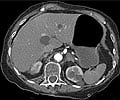The risk of coronary artery disease and acute myocardial infarction increases with second-hand smoke.

The principal investigator of the study (Dr Marcello Di Valentino) collected data retrospectively from the codified hospital discharge registry (ICD-10 codes) on STEMI hospitalisations in CT and CBC during the 3 years before (2004-2007) and after (2007-2010) the ban was implemented in CT.
In CT, data were acquired from the four cantonal public hospitals and from Cardiocentro Ticino, an exclusive institution for invasive coronary interventions. In CBC, data were obtained from the public University Hospital of Basel. For each considered year, STEMI incidence per 100,000 inhabitants was calculated for both CT and CBC using demographic data from the Swiss Federal Statistical Office.
The study found a significant and long-lasting reduction in the incidence of STEMI hospitalisations in the overall population of Canton Ticino after the smoking ban was implemented. Incidence reduced by an average of 21.1% between 2004-07 and 2007-2010. Compared to 2004-2007, incidence reduced by 23% in 2007-2008, 15% in 2008-2009, and 24% in 2009-2010.
When population subsets were analysed, the researchers found that the significant and long-lasting reduction in STEMI admissions was observed only among older people, with a 27.4% post-ban decrease in women ≥65 years and a 27.3% reduction in men ≥65 years. Younger people (<65 years) of both sexes showed a reduction (statistically significant in men, near to significance in women) in STEMI admissions only in the first year after the ban was enforced, with no significant decrease in the second and third years.
Dr Porretta said: "The varying impact of smoke-free legislation between age groups may be explained in part by the different role played by passive and active smoking in younger and older people."
Advertisement
She concluded: "Introduction of the smoking ban in public places induced a significant and long-lasting reduction in the incidence of STEMI among the overall population of Canton Ticino in Switzerland. The greatest impact was seen in women ≥65 years old."
Advertisement















